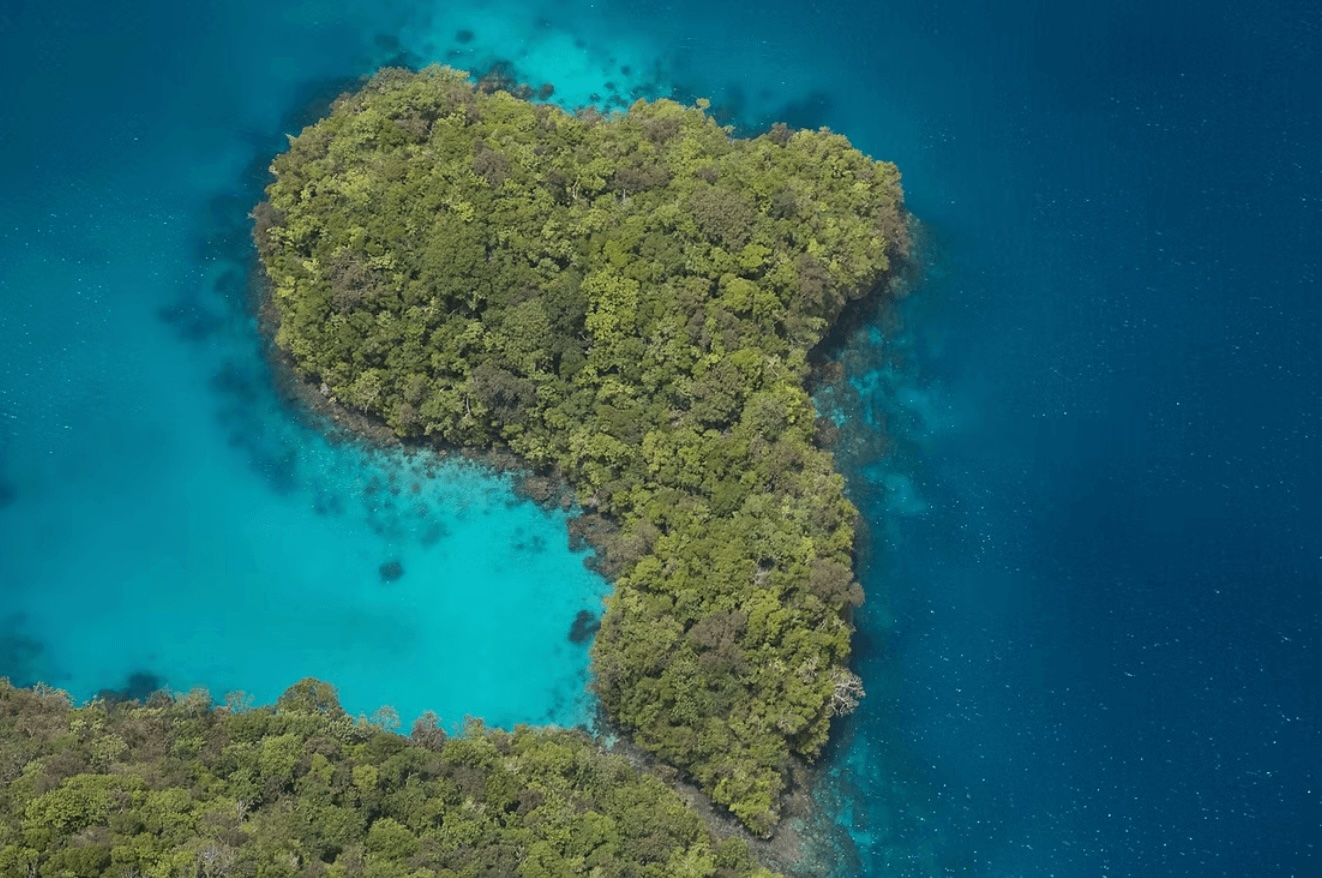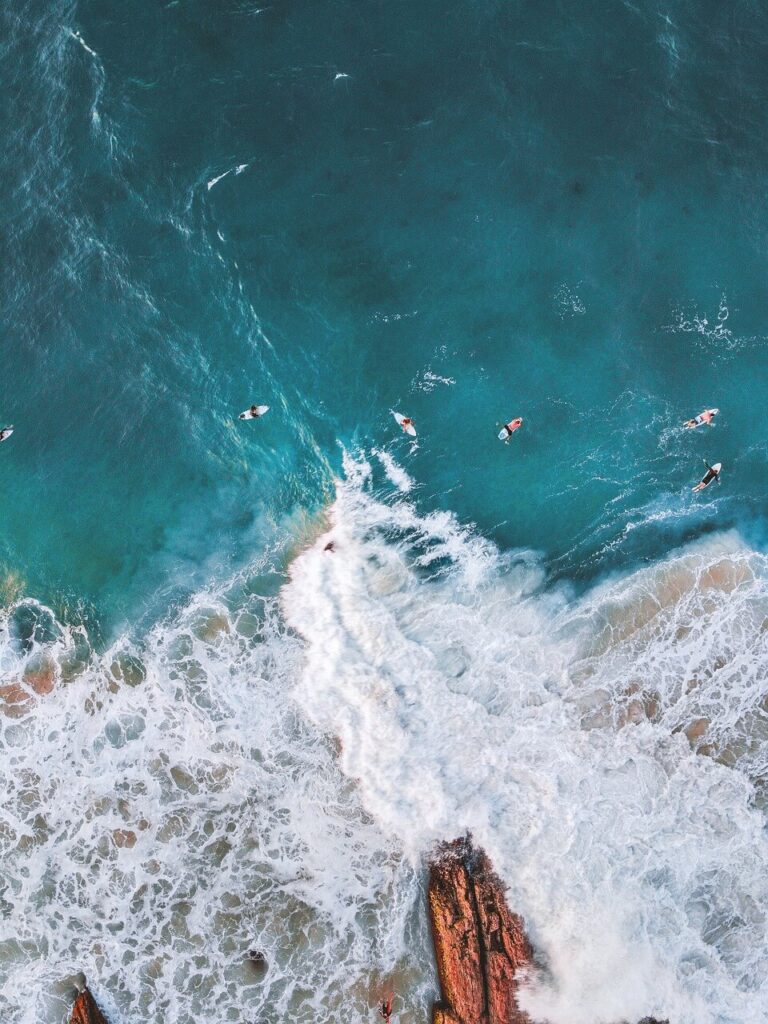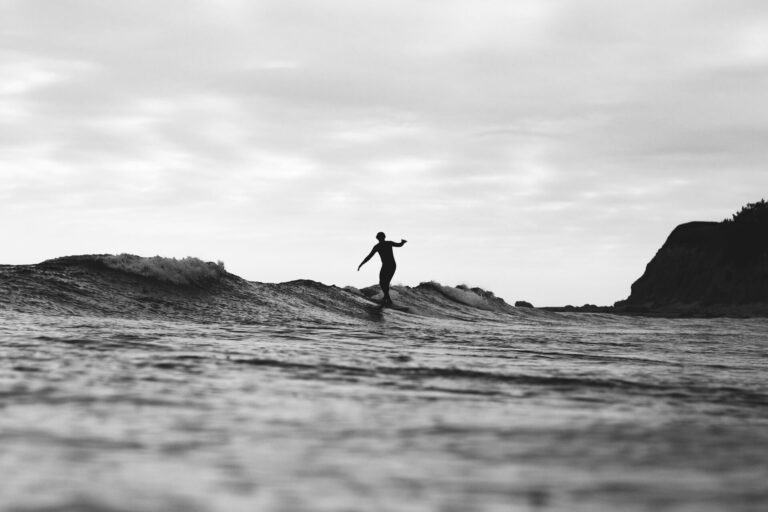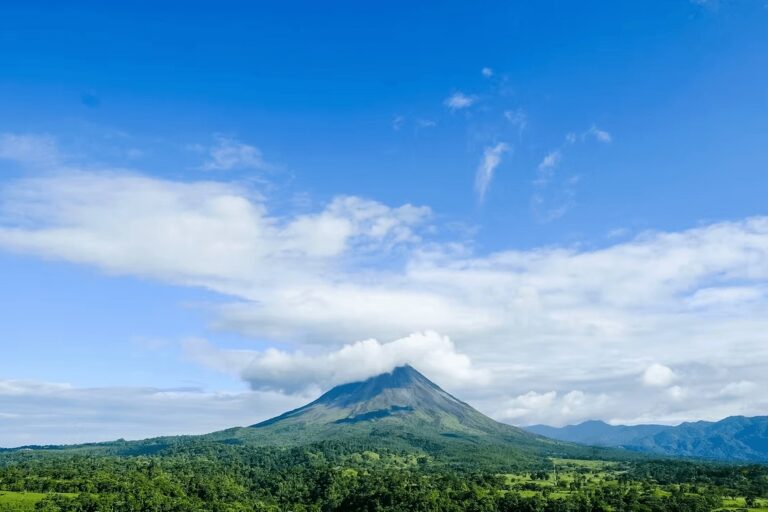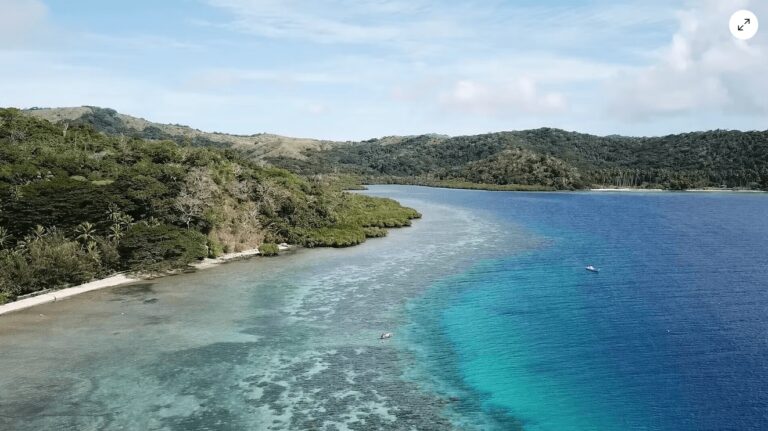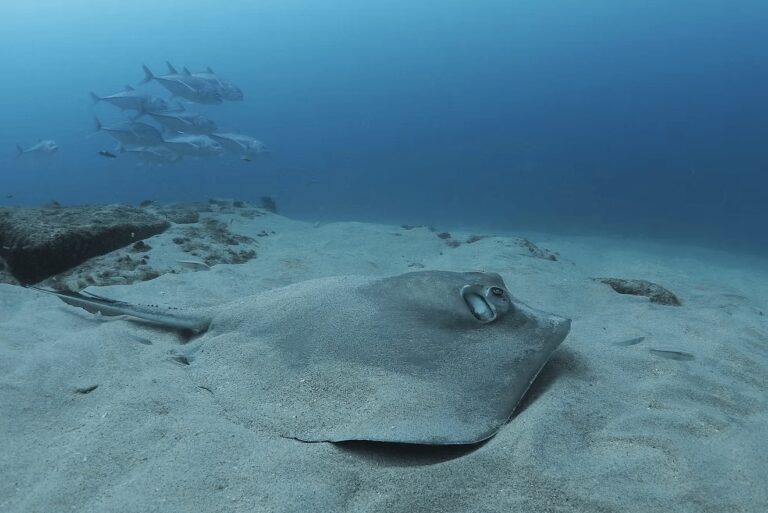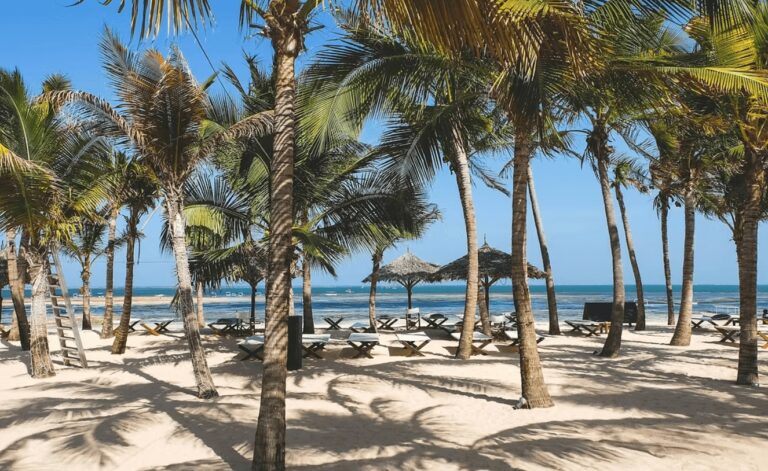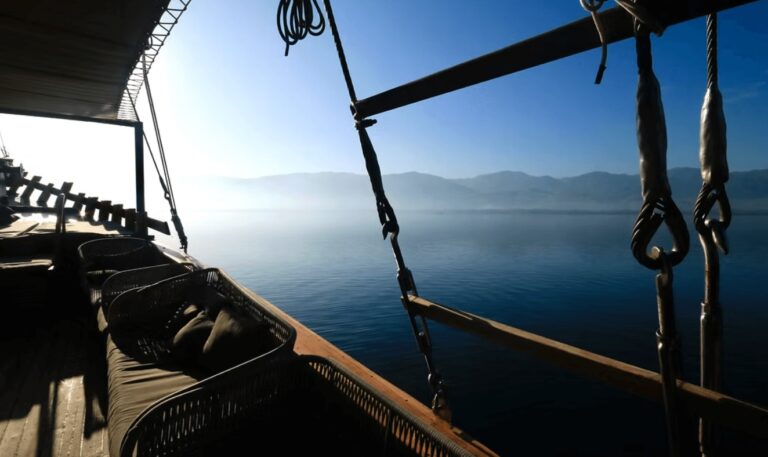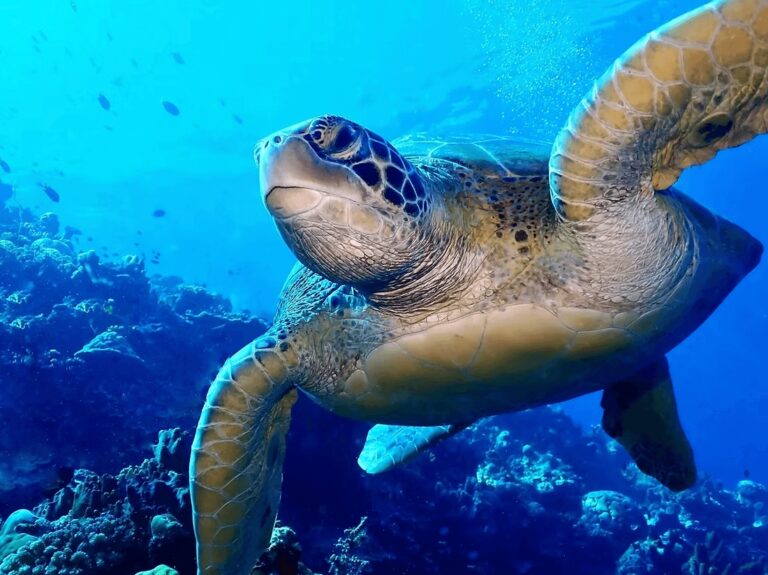Scuba diving in Palau: Highlights + liveaboards vs resorts
Thinking about scuba diving in Palau? Discover everything you need to know about exploring this island nation, including what you can expect to see underwater and whether to opt for a liveaboard vs resort-based dive vacation in Palau.
Comprising 340 islands in the northwest Pacific Ocean (between the Philippines and Guam), Palau is rapidly garnering a reputation as one of the world’s best scuba destinations.
Of its islands, 70 belong to a fully protected marine reserve, making Palau an undisputed diving paradise in Micronesia.
Palau’s waters boast an astounding diversity of marine life, spanning from the minuscule and intricate to the majestic and awe-inspiring. At the same time, its people have made an unwavering commitment to environmental preservation.
In fact, the importance of protecting the nation’s natural resources is so paramount that visitors to Palau are required to sign a “passport pledge” upon arrival. This says that you vow to behave in an ecologically and culturally responsible manner during your stay.
A highlight of scuba diving in Palau is its Shark Sanctuary – a 600,000 square kilometre zone (comparable in size to Thailand). Here, commercial shark fishing is strictly prohibited.
Additionally, the archipelago is home to around 300 species of soft corals, 1,400 species of reef fishes and 7 out of the 9 known species of giant clams worldwide. It’s also home to the most isolated population of dugongs (a relative of the sea cow) in Micronesia.
Complementing this astounding marine biodiversity are Palau’s untouched forests and its famous Jellyfish Lake, the largest freshwater lake in Micronesia.
While Palau may not be as well-known for its shipwrecks as neighbouring Chuuk Lagoon, the archipelago does boast over 60 World War II-era wrecks, collectively referred to as the “Lost Fleet of the Rock Islands.”
Whether you’re marvelling at Palau’s thriving coral wonderlands, encountering its staggering array of pelagic species or delving into its historic wartime shipwrecks, this remote Pacific archipelago offers one of the best-preserved underwater environments in the world.
In this article, we’ll explain everything you need to know about scuba diving in Palau, from logistics and weather considerations to eco-friendly resorts and hotels.

This article contains affiliate links, which means when you make a purchase through that link, we earn a small commission. Affiliate links come at no cost to you and ensure our content remains free!
Liveaboard vs land-based diving in Palau
When planning a dive vacation in Palau, you’ll be faced with a choice between two different experiences – liveaboard diving or resort-based diving.
Each option offers its own advantages, making the decision a balance of personal preferences and priorities. When making your decision, consider the budget you have available and whether you want to solely prioritise diving or discover Palau’s other natural and cultural attractions.
The liveaboard experience in Palau allows you to maximise your time underwater. You can expect up to five dives per day, including sunset and night dives that reveal the ocean’s nocturnal wonders.
With shore-based diving, most resorts cap the daily dives at three, concluding by mid-afternoon. It’s worth noting that most dive sites require a 40 to 60-minute boat ride from the main town of Koror, so add this into the equation.
A Palau liveaboard may appear pricier upfront. But the overall cost can actually be comparable once you factor in the limited budget accommodations that are available in Koror. Dining out is also quite expensive.
By living and diving directly from the boat, liveaboard guests enjoy the convenience of an all-inclusive experience. Meals, accommodations and multiple dives are covered in the one package.
That being said, staying at a Palau dive resort gives you greater options when it comes to dining – you can eat at a different restaurant each night. You’ll also have access to a wider range of facilities, such as gyms, tennis courts and swimming pools.
It may be a better choice if you’re travelling with non-diving family members and/or want to experience some of Palau’s land-based attractions.
Looking for liveaboard inspiration? Discover 8 eco-friendly liveaboards around the globe.

Eco-friendly resorts in Palau
Palau Pacific Resort
Nestled among 64 acres of tropical gardens is this award-winning Palau resort. It features traditional, cottage-style guest rooms with private balconies or patios.
Beyond the accommodations, there’s a full-service spa, a state-of-the-art fitness centre and a jacuzzi, plus tennis courts and a PADI 5-Star dive centre.
The Palau Pacific Resort supports conservation efforts aimed at protecting the region’s unique biodiversity. It proudly promotes eco-tourism activities that allow guests to immerse themselves in the wonders of Palau’s natural splendour.
“Beautiful resort.” – Cheryl (read more reviews here)

Cove Resort Palau
Centred around one of the largest lagoon swimming pools in Palau, this luxury resort boasts a waterfront setting on Malakal Island. Its stylishly appointed rooms are complemented by the Hungry Marlin Restaurant. Here, you can savour the freshest local seafood as you gaze out over the stunning marina.
Aside from diving and snorkelling excursions, this eco-friendly Palau resort can also arrange swimming with dolphins trips.
“Beautiful resort on Malakal Island.” – Elizabeth (read more reviews here)
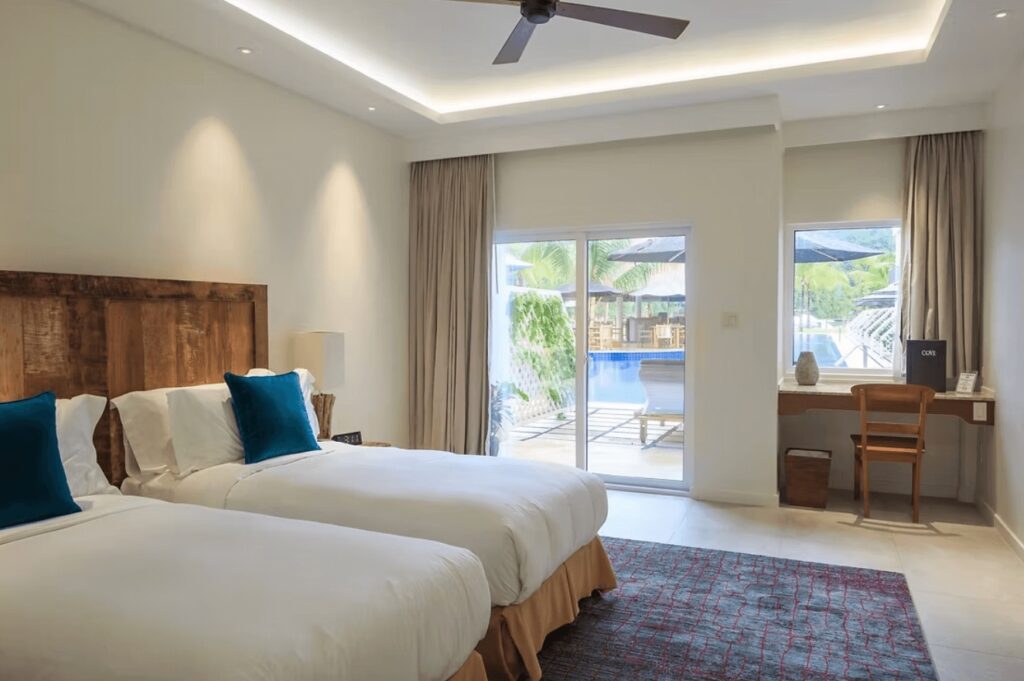
Palau Royal Resort
As one of only two hotels in the area boasting a private beach, this eco-friendly Palau resort offers a quintessential island vacation experience.
After a day of adventure, you can lounge poolside or indulge at the Mandara Spa. Then, sample the mouthwatering culinary delights at the open-air Waves Restaurant.
Demonstrating its commitment to sustainability, Palau Royal Resort proudly partners with organisations like the Palau Conservation Society. It’s striving to ensure that this tropical paradise remains pristine for generations to come.
“Exceeded expectations.” – John (read more reviews here)
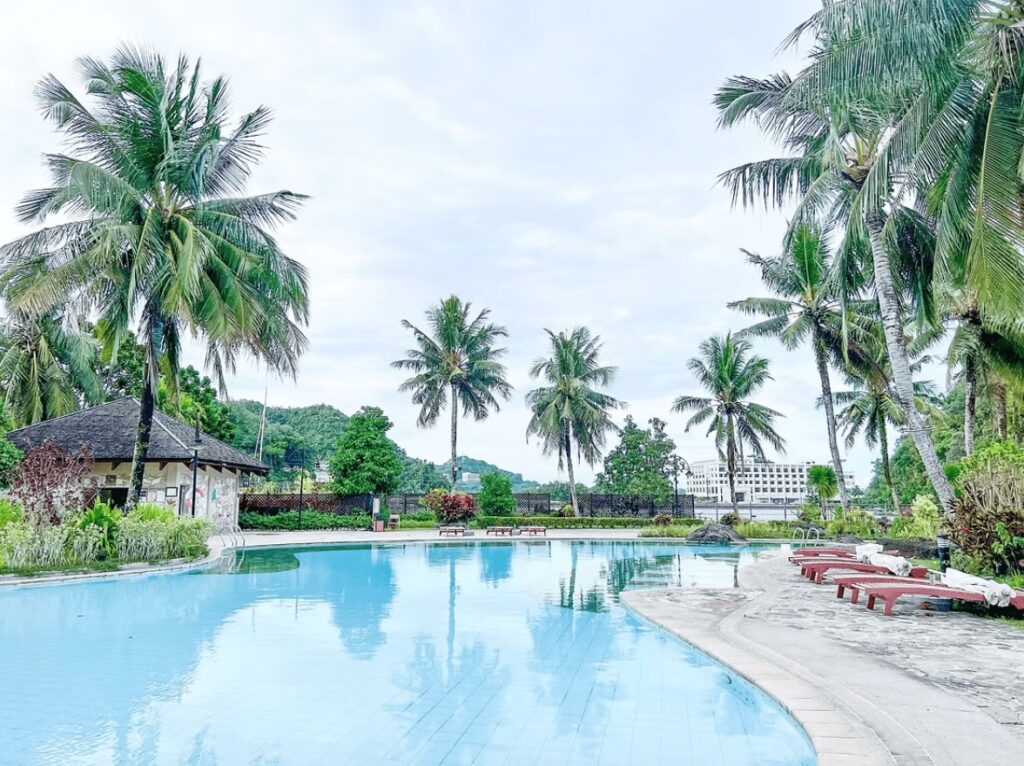
Palau Carolines Resort
Inspired by Palau’s centuries-old architecture, this atmospheric resort features eight private bungalows, all of which have been recently renovated. It’s located in the village of Ngerkebesang, a short drive from Koror.
While Palau Carolines Resort doesn’t have an onsite dive centre, the friendly owners can easily connect you with local operators.
Stays at this highly-rated Palau eco-resort are all about reconnecting with nature. We think it’s an ideal choice for travellers who are after a more “boutique” hotel experience.
“The most relaxing choice you can make around Koror.” – Ioana (read more reviews here)
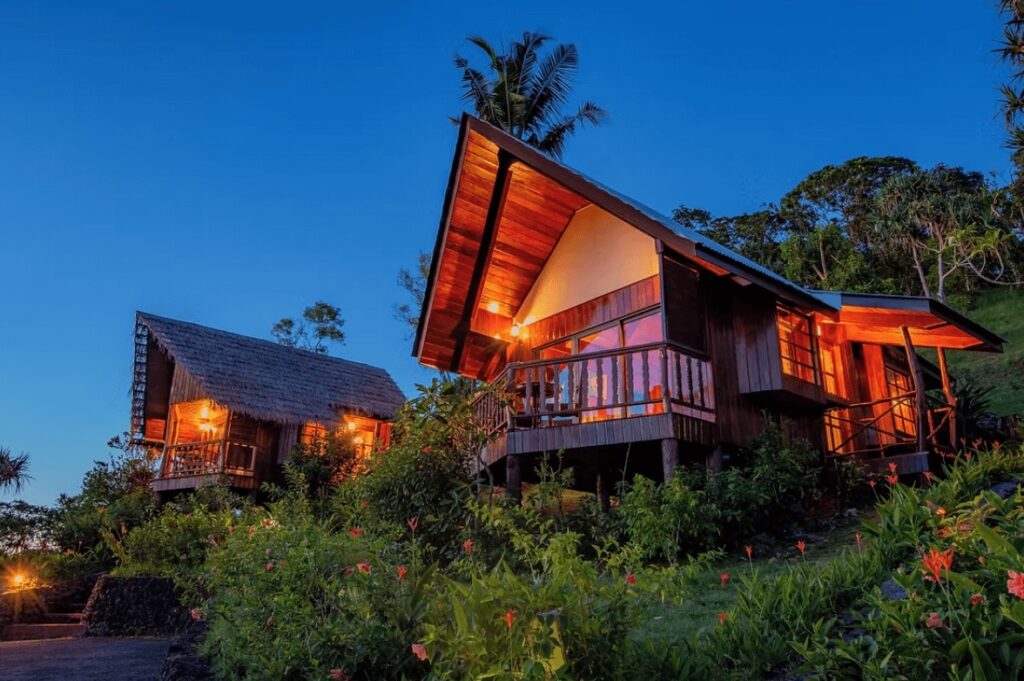
Non-diving activities in Palau
While the scuba diving in Palau is an undisputed highlight of visiting this island nation, there are plenty of other activities to enjoy if you want a day away from the water or if you are travelling with non-diving family members.
Discover the World War II history of Peleliu Island
The Battle of Bloody Nose Ridge, which raged for nearly three months in 1944, was a clash between American and Japanese forces. It left an indelible mark on Peliliu Island.
Today, visitors can explore the battlegrounds and remnants of that fateful conflict. While the jungle has reclaimed much of the battlefield, the vestiges of war remain – rusting tanks, discarded ammunition and military artefacts lie strewn about.
Due to the threat still posed by unexploded ordnances, joining a guided tour is essential.
Snorkel in Jelly Fish Lake
This natural wonder offers visitors a one-of-a-kind experience – being surrounded by thousands upon thousands of golden jellyfish gracefully drifting all around you. These mesmerising creatures are a sight to behold, with their gently pulsing bells and billowing tentacles creating an almost otherworldly atmosphere.
What makes this encounter even more remarkable is the fact that these jellyfish have lost their ability to sting, allowing you to safely swim amongst them. The water itself is crystal clear and serene, creating a sense of total calm and relaxation. A visit to Palau’s Jellyfish Lake is a true bucket list experience.
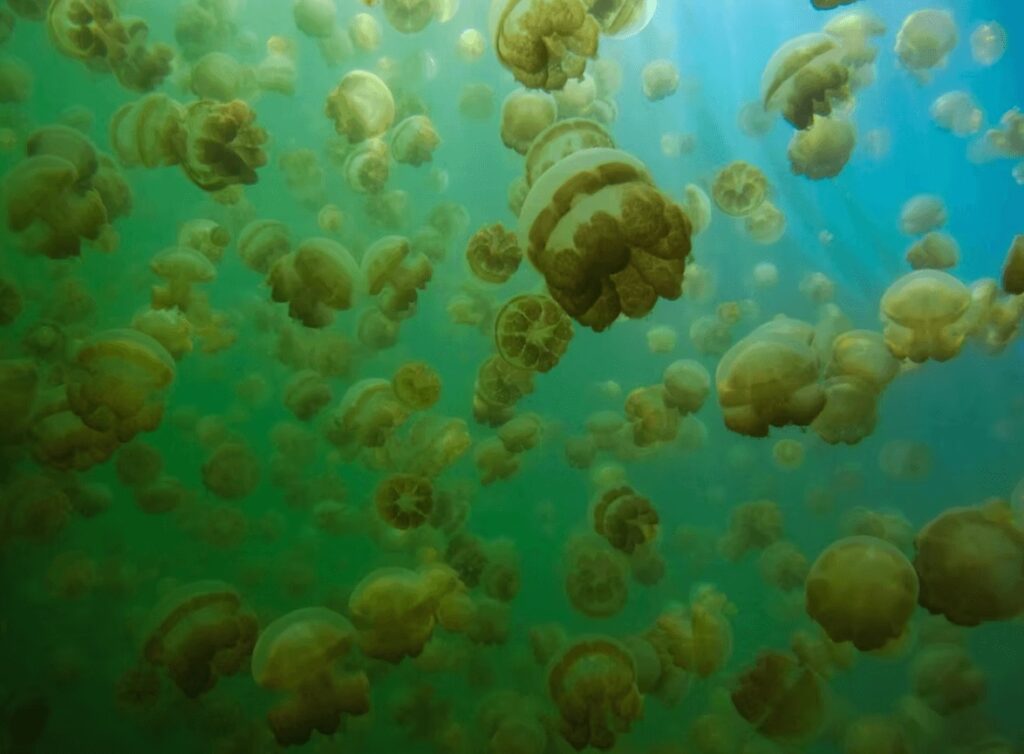
Explore the ancient Badrulchau Monoliths
On the northernmost point of the island of Babeldaob is a series of enigmatic stone monoliths.
According to local legend, these massive basalt columns were placed here long ago by a powerful deity. They were tasked with supporting the construction of a grand Bai – a traditional meeting house intended to house and unite all of the god’s devoted followers.
The monoliths are arranged in two distinct rows. Some bear intricate carvings that have sparked endless speculation and wonder among historians and archaeologists alike.
Photograph the traditional Bai house in Babeldaob
In Palau, each village once had its own Bai house that served as the central meeting place and community centre. At the start of the 20th century, over 100 of these impressive structures still stood.
These buildings were constructed with great skill and artistry. Their frames and walls were crafted from fine, durable hardwoods and their exteriors elaborately decorated with traditional designs.
Though many have been lost over the decades, the surviving Bai in Babeldaob continues to stand as a powerful symbol of Palau’s cultural heritage.
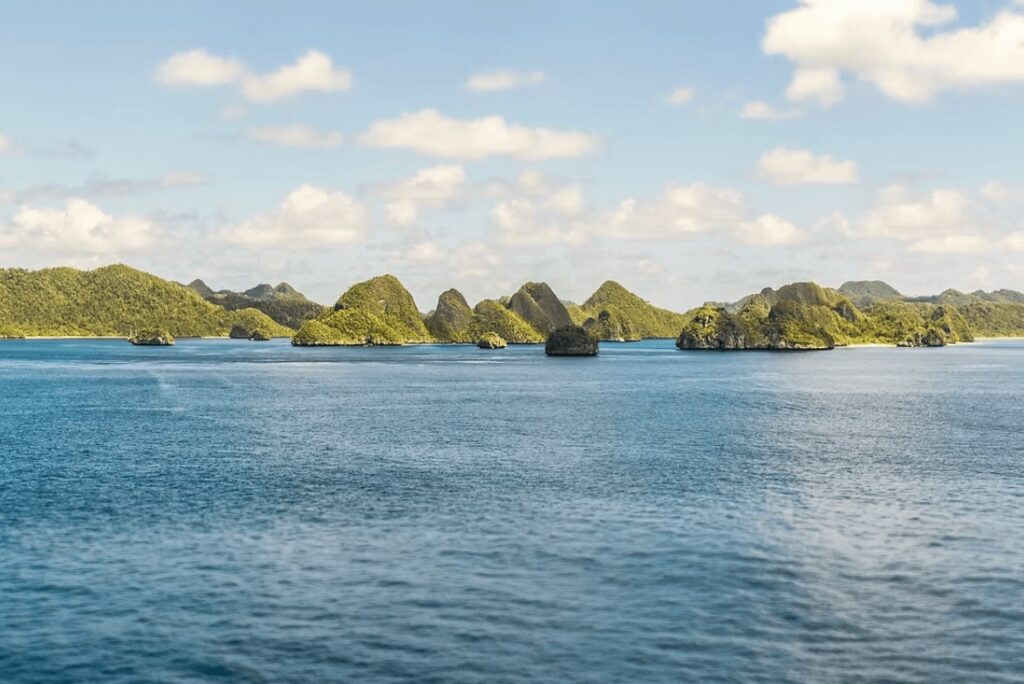
Marvel at the Ngardmau Waterfall
Rising to 30 metres in height and stretching 37 metres wide, this picturesque cascade plummets dramatically over the rocky cliffs of Babeldaob. As you venture downstream along the trail, you’ll discover a series of pools and miniature waterfalls.
The trail is dotted by remnants of Palau’s colonial past, including relics of the island’s former railway system from the Japanese occupation era. And for those disinclined to tackle the hike, there are convenient alternatives, such as a scenic monorail or an exhilarating zip-line.
Paddle between the Rock Islands
The Rock Islands of Palau are rightly regarded as one of the premier destinations in the world for kayaking and stand-up paddleboarding. Scattered across the turquoise waters of the western Pacific, this cluster of limestone islands draws adventurers from all corners of the globe who come to experience its unparalleled natural beauty.
With the vast majority of the islands devoid of permanent human habitation, the sense of solitude is palpable. As you glide silently between the islands or venture into the hidden coves and inlets, the only sounds that interrupt the tranquility are the gentle lapping of the waves and the calls of birds.
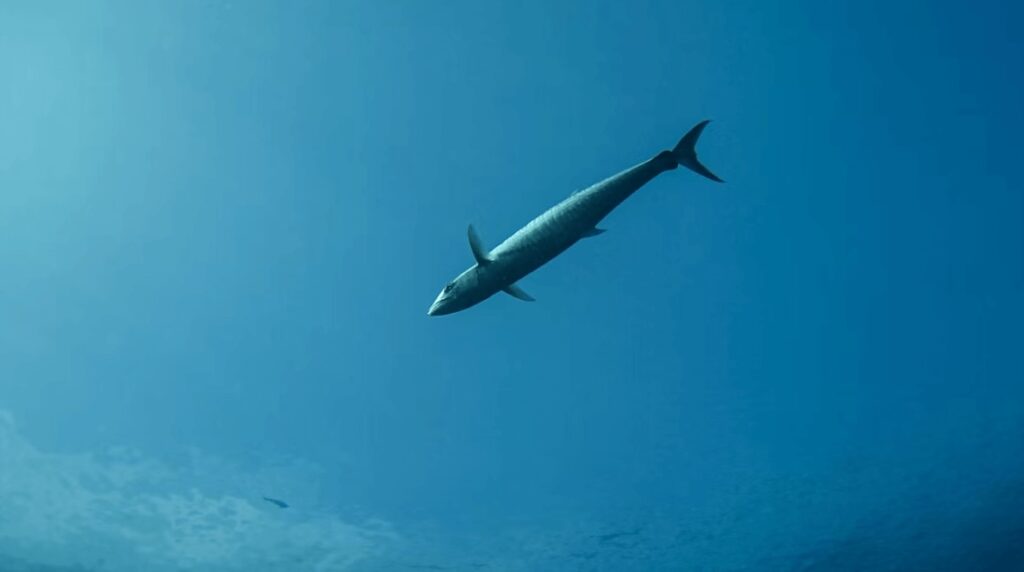
Best time to dive in Palau
While diving in Palau is possible year-round, the high season, spanning from October to May, is widely considered the prime time to visit. During these months, the water is typically calm and pleasantly warm, with visibility often exceeding 40 metres – an underwater photographer’s dream.
Water temperatures are generally between 27 and 30°C (81and 86°F), with most divers comfortable in a 3mm wetsuit.
During the rest of the year, you can expect an increase in rainfall and choppier seas. As a result, the visibility is not quite as good.
While diving is still possible during these months, with the majority of sites accessible, fewer visitors choose to vacation in Palau at this time. This translates to reduced crowds at the dive sites and greater flexibility in finding accommodations.
In short, the low season is an appealing choice for those seeking a more cost-effective Palauan diving adventure.
FAQs about diving in Palau
When is the diving season in Palau?
The best time to dive in Palau is between October and May when the conditions are ideal. The water is pleasantly warm and exceptionally calm, with visibility often exceeding 40 metres. Meanwhile, the weather is reliably sunny and mild.
If possible, coincide your scuba diving in Palau trip with the new moon to witness the bump-headed parrotfish spawning. Alternatively, visit during the full moon to see large gatherings of bohar snapper.
During the rest of the year, you can expect an increase in rainfall and choppier conditions at the surface. However, there are fewer other divers in the water and more affordable accommodation deals. While the weather is more unpredictable during these months, the majority of Palau’s dive locations remain accessible.
What is there to see scuba diving in Palau?
Often referred to as the “Big Stuff” capital, this remote Pacific archipelago is teeming with life. It boasts an abundance of pelagic marine life that has been fiercely protected over the years.
Scuba diving in Palau means encountering sharks, manta rays and huge schools of other pelagic fish such as jacks, barracuda and snapper. Not to mention the distinctive bump-headed parrotfish.
But the wonders of Palau extend beyond just its charismatic megafauna. This island nation is also home to the captivating Jellyfish Lake, where millions of endemic, golden jellyfish undulate peacefully.
And for those seeking to explore Palau’s World War II history, the island’s lagoons and jungles are littered with the wreckage of long-abandoned planes, offering a window into the region’s past.
Another highlight of diving in Palau is magnificent Chandelier Cave. Here, rays of light pierce through the water and illuminate the cavern’s stunning rock formations.
How much experience do you need to dive in Palau?
Provided you can handle a moderate amount of current and have learned the proper technique for using a reef hook, you’ll be well-equipped for diving in Palau.
That being said, our advice would be to aim for at least an Advanced Open Water diver certification. Ideally, combine this with Nitrox training.
This will ensure you have the necessary skills for scuba diving in Palau. Plus the confidence to make the most of your time in the water.
Should I stay at a dive resort or on a liveboard in Palau?
When planning a dive vacation in Palau, you can choose between liveaboard diving or resort-based diving. Each has its own advantages. It’s worth keeping in mind that most of the nation’s dive sites can easily be accessed from Koror, with a boat ride of between 40 and 60 minutes.
The liveaboard experience in Palau allows you to maximise your time spent underwater. Usually, up to five dives per day are offered. It’s a great option if you just want to dive, dive, dive and have everything included in a package.
The main drawback of liveaboard diving is that you generally have less room to move compared to a resort. Plus, there’s not much opportunity to participate in non-diving activities.
In contrast, shore-based diving at Palau’s resorts typically caps the daily dives at three, concluding by mid-afternoon. This leaves you with more time to experience the island’s terrestrial wonders.
There may be long-ish boat rides to get to the dive sites in the morning. Also, surface intervals will usually be spent on a small dive boat, rather than relaxing on a liveaboard sun lounger.
While a Palau liveaboard may appear pricier upfront, the overall cost can actually be comparable to a resort-based vacation. That’s once you factor in the limited budget accommodations that are available in Palau and the higher costs of dining out in this remote island paradise.
Are there whale sharks in Palau?
Situated in the heart of the western Pacific, Palau serves as a waystation for a procession of migratory marine life. Whale sharks, the largest fish on the planet, cruise through the waters. They’re drawn by the abundant plankton blooms that flourish in the nutrient-rich currents.
Manta rays also congregate in Palau’s sheltered lagoons and channels, where they come to filter-feed on clouds of zooplankton.
Generally speaking, January to April is the best time to see whale sharks and manta rays in Palau.
A variety of cetaceans – from humpback whales to acrobatic spinner dolphins – also make regular appearances. Most are taking advantage of Palau’s strategic location along their annual migration routes.
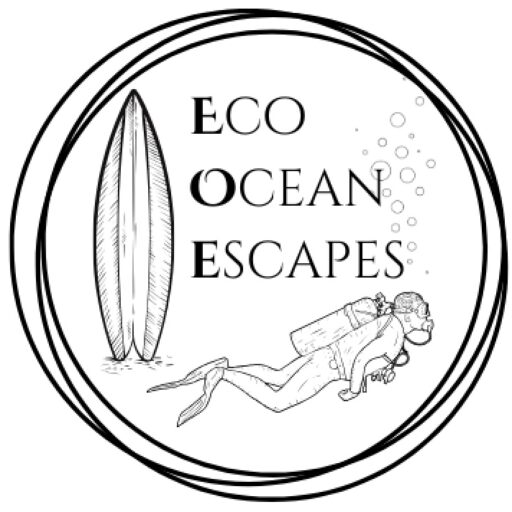
PLAN YOUR TRIP WITH OUR FAVOURITE RESOURCES:
Find hotels and resorts via Booking or Agoda
Book tours and experiences via Viator or GetYourGuide
Find a rental car via Discover Cars
Book flights via Kiwi or Booking
Search for buses and trains via 12Go or Omio
Get travel insurance via SafetyWing
Buy a digital eSIM with Airalo
By purchasing through our links, you’ll be supporting our website at no additional cost to you
About the authors
We are a team of passionate divers and surfers with decades of combined experience in the water and travelling to all corners of the globe. After years of chasing waves and descending into the deep blue, we’ve created this resource to highlight sustainably run surf camps, eco-friendly dive resorts and conservation-focused ocean trips to help inspire your next adventure.
Eco Ocean Escapes was born out of a love of the ocean, an obsession with travel and a concern about the impacts of our adventures on the environments we explore. Despite the benefits that surf and dive tourism can bring to local communities, we recognised that ocean-based adventures are not always managed in a sustainable manner.
Through our articles, we hope to inspire those seeking a responsible surf or dive trip that is all about supporting local communities, preserving our coastal environments and the incredible marine species that inhabit our oceans.
-
Sustainable Surf Tourism and Respecting Local Communities
Surf tourism has exploded over the last two decades. With travel becoming more accessible and social media exposing hidden spots, once-remote breaks in Indonesia, Central America, Morocco and the Pacific Islands are now iconic stops on global surf circuits. While surf travel brings income, jobs and global attention to coastal towns, it can also disrupt…
-
Inspiring Citizen Science Projects for Surfers + How to Get Involved
As surfers, we are intimately connected to the ocean – its rhythms, its wildlife and its health. Because of this relationship, many of us are looking for meaningful ways to protect the marine environments we love. One of the simplest and most impactful ways we can do this is by joining citizen science projects. These…
-
Understanding Marine Protected Areas (MPAs): Why divers should care
If you’ve spent time underwater (as a diver or snorkeller), you’ve probably noticed something: not all sites are beacons of health. Some reefs appear vibrant and full of life, while others show signs of stress – broken coral, few fish or algae-covered rocks. One of the biggest factors shaping the health of our oceans is…
-
Costa Rica: Best Marine Parks for Scuba Divers + Eco Dive Resorts
Costa Rica is a paradise for eco-conscious travellers and underwater explorers are no exception. With its healthy coral reefs, pelagic-rich waters and some of the most progressive environmental policies in the world, the country is a dream destination for those who want to dive responsibly. We’ve been lucky enough to visit Costa Rica several times…
-
Eco-Diving: Best Destinations for Sustainable Scuba Travel
As humans inspired by the underwater world, there is plenty of incentive to protect our coral reefs. Here at EcoOceanEscapes, we want to do our bit to save endangered marine species and keep our oceans free of trash. One impactful action we can all take is to choose sustainable diving destinations. These are nations (or…
-
Eco-Friendly Diving: How to Be a Sustainable Scuba Advocate
Understand the environmental impacts of diving and sustainable scuba practices in this comprehensive guide to eco-friendly diving. Any diver will tell you that being underwater is an incredible experience. It’s a world that not everyone has the opportunity to explore and the encounters we have with marine creatures can be life-changing. Watching manta rays soar…

We are a team of passionate divers and surfers with decades of combined experience in the water and travelling to all corners of the globe.
After years of chasing waves and descending into the deep blue, we’ve created this resource to highlight sustainable surf camps, eco-dive resorts and conservation-focused ocean trips to help inspire your next adventure.
Eco Ocean Escapes was born out of a love of the ocean, an obsession with travel and a concern about the impacts of our adventures on the environments we explore.
